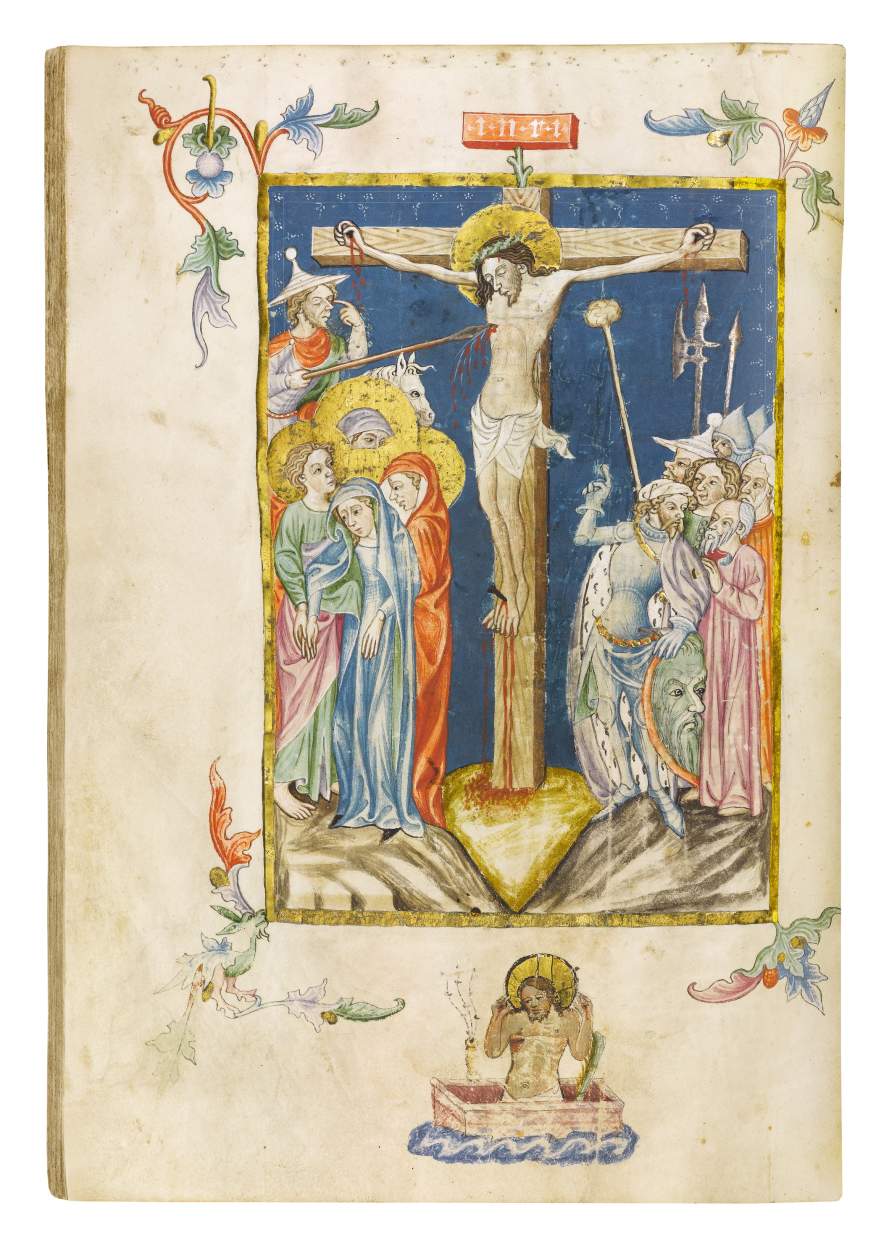Artworks


Missale Romanum Latinum
Illuminated manuscript on vellum
Bohemia, Prague, c. 1400
342 x 227 mm, 383 leaves,
1 full-page miniature, 3 historiated initials
fol. 259v: Crucifixion
Hide caption

Missale Romanum Latinum
Illuminated manuscript on vellum
Bohemia, Prague, c. 1400
342 x 227 mm, 383 leaves,
1 full-page miniature, 3 historiated initials
fol. 260: Initial T with Man of Sorrows
Hide caption

Missale Romanum Latinum
Illuminated manuscript on vellum
Bohemia, Prague, c. 1400
342 x 227 mm, 383 leaves,
1 full-page miniature, 3 historiated initials
fol. 1: Initial A with Pope Gregory the Great
Hide caption

Missale Romanum Latinum
Illuminated manuscript on vellum
Bohemia, Prague, c. 1400
342 x 227 mm, 383 leaves,
1 full-page miniature, 3 historiated initials
original binding
Hide caption
The illumination in this book was executed by two artists, presumably in Prague. The Bohemian capital was at the time of King Wenceslaus IV (1361-1419) a melting pot for artists from neighbouring countries like Silesia, Moravia, Austria or Franconia. Artists from France and Italy were equally active in this prolific region, attracted by the erudite and refined court of Wenceslaus' predecessor and father, Emperor Charles IV (1316-1378). This amalgam of painters who cooperated and influenced each other resulted in a sophisticated variant of the international gothic style: the so-called 'beautiful style' (Schöner Stil).
The master who was responsible for the initials of Ad te levavi (fol. 1r) and the Puer natus est (fol. 30v) was influenced by an illuminator named after the manuscripts for the art-loving archbishop Albert of Sternberg. He is stylistically close to the illuminator of the Sadská Bible in the National Museum Library in Prague (mss. XIII.A.8, XII.A.19, XIII.A.10, late 14th century). Both initials show a somewhat naive but delicate style with beautiful decorated, multi-coloured foliate borders and well-preserved gold sprays. The second and best painter executed the full-page miniature with the graceful and delicately composed Crucifixion (fol. 259v) as well as the Te Igitur initial (fol. 260r). Next to the crucified Christ, St. John is supporting Mary, while the two other Marys (Mary Cleophas, Mary Magdalene), Longinus (with a Jew’s hat) on horse, the Centurion of Capernaum and other bystanders make this into an impressive narrative scene.
The painter's style is characterised by outlined faces with a dash of blush, large noses, small lips with a dot of red and curly lines of hair. The Virgin's posture as well as her facial expression speaks of feebleness and resignation. The soldier Longinus points at his eyes indicating that he is cured from blindness by the blood from Christ's lateral wound. This skilful artist is identified as the Master of the Pauline Epistles (named after Cod. 2789, Vienna, ÖNB) to whom we can ascribe more than twenty manuscripts. His activity in Prague can be verified between c. 1380-1420.
This stunning, large volume is bound in a beautiful contemporary blind-stamped pigskin binding over original wooden boards. In all, it is quite unique to find a Missal of such quality - made for daily usage - complete and in very good condition.
Read more about this manuscript in our in our Spotlight on Austria and Bohemia and in our Christmas 2017 Spotlight.



